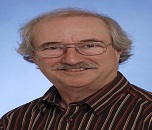Theme: A Step towards Development of Green Future
Euro Biomass 2016
ConferenceSeries Ltd invites all the participants from all over the world to attend ‘Euro Global Summit & Expo on Biomass ‘during August 08-09, 2016 at Birmingham, UK which includes prompt keynote presentations, Oral talks, Poster presentations and Exhibitions.
Biomass conference 2016 is a global platform to discuss and learn about biomass conversion methods and its alternative sources of energy, Biomass to liquid, Biomass energy resources, Biomass conversion to bioenergy, Environmental impact of biomass, Handling biomass, Second generation biofuels, Bioenergy for global sustainable development, Biomass from microbial sources, Landfill gas and transportation.
ConferenceSeries Ltd organizes a conference series of 3000+ Global Events with over 600+ Conferences, 1200+ Symposiums and 1200+ Workshops in USA, Europe & Asia with support from 1000 more scientific societies and publishes 700+ Open access journals which contains over 30000 eminent personalities, reputed scientists as editorial board members.
Track 1: Biomass Conversion Methods
Wind energy development has grown rapidly from past few years in order to meet the needs of people as an alternative source of energy. Predominantly, the production of biomass energy from various metamorphoses methods are invented and developed. Biomass transformation is the process of transforming biomass feedstock into the energy that can be pre-owned to generate heat and electricity. Bioenergy can be changed into power through thermo-chemical cycles i.e. combustion, gasification and pyrolysis or bio-chemical operations like anaerobic digestion. Renewable technologies have made up to 7% of electricity generated in 2010-this will arise as the UK aims to meet its EU target of generating 30% of its electricity from renewable sources by 2020.
Related Conferences : 2nd Conference on Biofuels and Bioenergy, August 25-27, 2016 Sao Paulo, Brazil; Conference on Chemical Engineering, September 12-14, 2016 Phoenix, USA; Conference on Petroleum Engineering, September 12 - 14, 2016 at Phoenix, USA; Global Summit on Biomass, October 10-12, 2016 Dubai, UAE; Conference on Biodiesel, December 08-10, 2016 San Antonio, USA; Conference on Bioenergy, June 13-15, 2016 Rome, Italy; Conference on Molecular Aspects of Catalysis, May 22-26, 2016 Doorn, Netherlands; Conference on Mass Transfer, May 23-26, 2016 Cracow, Poland ; Conference on Sustainable Design Engineering, May 18-20, 2016 Tempe, United States; Conference on Metabolic Engineering, June 26-30, 2016 KÅbe, Japan; Conference on Energy Future, July 04-06, 2016 UNSW, Australia; Russian Biofuels Association; PA biomass Energy Association.
Track 2: Biomass Applications
Biomass is pre-treated and then transformed to synthesis gas via gasification. The resulting syngas is then cleaned preliminary to conversion to liquid biofuels, typically via Fischer Tropsch or the Mobil process. There are two main biomass-based liquid propellant in the market place today, ethanol and biodiesel. Some 20 Mm 3 y -1 of ethanol is produced with an energy content of 425 PJ, manufacturing this the second most important microbial biofuel. A much smaller amount of hydrogen and biodiesel is used in the USA and Europe. Generally a tonne of cane produces between 125 and 140 kg of raw sugar, or between 70 and 80 litres of ethanol, although a tonne of maize, with about 70% to 75% starch content, will produce between 440 and 460 L t -1 with wet and dry corn crushing, respectively.
Related Conferences : Conference on Biodiesel, December 08-10, 2016 San Antonio, USA; Conference on Bioenergy, June 13-15, 2016 Rome, Italy; 2nd Conference on Biofuels and Bioenergy, August 25-27, 2016 Sao Paulo, Brazil; Conference on Chemical Engineering, September 12-14, 2016 Phoenix, USA; Conference on Petroleum Engineering, September 12 - 14, 2016 at Phoenix, USA; Global Summit on Biomass, October 10-12, 2016 Dubai, UAE; Conference on Sustainable Design Engineering, May 18-20, 2016 Tempe, United States; Conference on Metabolic Engineering, June 26-30, 2016 KÅbe, Japan; Conference on Energy Future, July 04-06, 2016 UNSW, Australia; Conference on Molecular Aspects of Catalysis, May 22-26, 2016 Doorn, Netherlands; Conference on Mass Transfer, May 23-26, 2016 Cracow, Poland ; European Biogas Association, Algae Biomass organisation; Biomass Power Association.
Track 3: Biomass Energy Resources
Agricultural sciences which could be pre-owned for energy production is defined as biomass residues from field agricultural crops and biomass from the concomitant of the processing of agricultural products. In the last decade, the demand for energy wood in Europe increased and experts anticipate a further increase in future due to socio-political changes. The largest renewable propellant used in Europe is wood which can be used in non-identical forms from sticks to pellets to sawdust. In some countries, like Poland and Finland, wood meets more than 80% of renewable-energy demand. Europe consumed 13m tonnes of wood pellets in 2012, corresponding to International wood Markets Group, a Canadian company.
Related Conferences : Conference on Chemical Engineering, September 12-14, 2016 Phoenix, USA; Conference on Petroleum Engineering, September 12 - 14, 2016 at Phoenix, USA; Global Summit on Biomass, October 10-12, 2016 Dubai, UAE; Conference on Biodiesel, December 08-10, 2016 San Antonio, USA; Conference on Bioenergy, June 13-15, 2016 Rome, Italy; 2nd Conference on Biofuels and Bioenergy, August 25-27, 2016 Sao Paulo, Brazil; Conference on Mass Transfer, May 23-26, 2016 Cracow, Poland ; Conference on Sustainable Design Engineering, May 18-20, 2016 Tempe, United States; Conference on Molecular Aspects of Catalysis, May 22-26, 2016 Doorn, Netherlands; Conference on Metabolic Engineering, June 26-30, 2016 KÅbe, Japan; Conference on Energy Future, July 04-06, 2016 UNSW, Australia; Austrian Biomass Association; Biomass Energy Research Association.
Track 4: Supply Chain Management
The initial part of supply chain Management is finding a suitable biomass feedstock. Microbial biofuels supply chain has several components associated through the flow of materials. Components incorporate feedstock production, feedstock logistics, conversion/upgrading and distribution. Materials transform format and characteristics as they move through the supply chain. It starts right from biomass resource harvesting and goes on to comprise biomass collection, processing, storage and eventually its transportation to the point of ultimate utilization. The market, by component, is grouped into software and hardware. Based on delivery mode, the market is categorized into web-based, on-premise, and cloud-based.
Related Conferences : Conference on Bioenergy, June 13-15, 2016 Rome, Italy; Conference on Biodiesel, December 08-10, 2016 San Antonio, USA; 2nd Conference on Biofuels and Bioenergy, August 25-27, 2016 Sao Paulo, Brazil; Conference on Chemical Engineering, September 12-14, 2016 Phoenix, USA; Conference on Petroleum Engineering, September 12 - 14, 2016 at Phoenix, USA; Global Summit on Biomass, October 10-12, 2016 Dubai, UAE; Conference on Sustainable Design Engineering, May 18-20, 2016 Tempe, United States; Conference on Metabolic Engineering, June 26-30, 2016 KÅbe, Japan; Conference on Energy Future, July 04-06, 2016 UNSW, Australia; Conference on Molecular Aspects of Catalysis, May 22-26, 2016 Doorn, Netherlands; Conference on Mass Transfer, May 23-26, 2016 Cracow, Poland ; European Biogas Association, Algae Biomass organisation; Biomass Power Association.
Track 5: Bioenergy Conversion Methods
Production of energy crops could potentially compete for land with food cropping as demand for biomass increases. Biomass customers may be locked in long-term supply contracts with a single supplier making it difficult to get competitive pricing in the future. Alternative impacts are similar to those covered in the District Heating and Combined Heat transfer and hydro Power energy pages. The non-destructive pilot market is estimated to be valued at USD 12.98 Billion in 2015 and is projected to outstretch USD 18.88 Billion by 2020, at a CAGR of 7.78% from 2014 to 2020.
Related Conferences : Global Summit on Biomass, October 10-12, 2016 Dubai, UAE; 2nd Conference on Biofuels and Bioenergy, August 25-27, 2016 Sao Paulo, Brazil; Conference on Chemical Engineering, September 12-14, 2016 Phoenix, USA; Conference on Petroleum Engineering, September 12 - 14, 2016 at Phoenix, USA; Conference on Biodiesel, December 08-10, 2016 San Antonio, USA; Conference on Bioenergy, June 13-15, 2016 Rome, Italy; Conference on Molecular Aspects of Catalysis, May 22-26, 2016 Doorn, Netherlands; Conference on Mass Transfer, May 23-26, 2016 Cracow, Poland ; Conference on Sustainable Design Engineering, May 18-20, 2016 Tempe, United States Conference on Metabolic Engineering, June 26-30, 2016 KÅbe, Japan; Conference on Energy Future, July 04-06, 2016 UNSW, Australia; ; Russian Biofuels Association; PA biomass Energy Association.
Track 6: Renewable Energy
Renewable energy is energy that is generated from natural processes that are continuously replenished. This includes sunlight, geothermal heat, wind energy, tides, water, and various forms of biomass. This energy cannot be exhausted and is constantly renewed. Biomass, is a renewable organic matter, and can include biological material derived from living, or recently living organisms, such as wood, waste, and alcohol fuels.
Related Conferences : Conference on Biodiesel, December 08-10, 2016 San Antonio, USA; Conference on Chemical Engineering, September 12-14, 2016 Phoenix, USA; Conference on Petroleum Engineering, September 12 - 14, 2016 at Phoenix, USA; Global Summit on Biomass, October 10-12, 2016 Dubai, UAE; Conference on Bioenergy, June 13-15, 2016 Rome, Italy; 2nd Conference on Biofuels and Bioenergy, August 25-27, 2016 Sao Paulo, Brazil; Conference on Mass Transfer, May 23-26, 2016 Cracow, Poland ; Conference on Sustainable Design Engineering, May 18-20, 2016 Tempe, United States; Conference on Molecular Aspects of Catalysis, May 22-26, 2016 Doorn, Netherlands; Conference on Metabolic Engineering, June 26-30, 2016 KÅbe, Japan; Conference on Energy Future, July 04-06, 2016 UNSW, Australia; Austrian Biomass Association; Biomass Energy Research Association.
Track 7: Environmental Impact of Biomass
Hydro energy market dynamics, especially fluctuations in petroleum and natural gas prices, have long affected the profitability of agricultural economics. Renewable propellant standard programs originating under the Energy policy Act of 2005 and the internal energy ability and Security Act of 2007, the part of U.S corn production supplying the ethanol market has grown from 70.5% in 2001 to 23.2% in 2008. This deviation of corn from export markets has had likely impacts on global food prices. The automotive exhaust after treatment systems market is evaluated to be 141,366.05 Thousand units in 2015, and is projected to extend 206,430.48 thousand units by 2020, growing at a CAGR of 7.87% during the forecast period.
Related Conferences : Conference on Chemical Engineering, September 12-14, 2016 Phoenix, USA; Conference on Biodiesel, December 08-10, 2016 San Antonio, USA; Conference on Bioenergy, June 13-15, 2016 Rome, Italy; 2nd Conference on Biofuels and Bioenergy, August 25-27, 2016 Sao Paulo, Brazil; Conference on Petroleum Engineering, September 12 - 14, 2016 at Phoenix, USA; Global Summit on Biomass, October 10-12, 2016 Dubai, UAE; Conference on Sustainable Design Engineering, May 18-20, 2016 Tempe, United States; Conference on Metabolic Engineering, June 26-30, 2016 KÅbe, Japan; Conference on Energy Future, July 04-06, 2016 UNSW, Australia; Conference on Molecular Aspects of Catalysis, May 22-26, 2016 Doorn, Netherlands; Conference on Mass Transfer, May 23-26, 2016 Cracow, Poland ; European Biogas Association, Algae Biomass organisation; Biomass Power Association.
Track 8: Advanced Biofuels
The two main alternative routes of second generation biofuels are Bio-chemical and Thermo-chemical. Second generation microbial biofuels are expected to be preferable to many of the first generation biofuels in terms of energy balances, greenhouse gas emission reductions, land use compulsion, and competition for land, food, fibre and water. The potential raw material for second-generation biofuels management considered in this study are biomass from crops residues, other non-food energy crops, wood/forestry silt, and jatropha and algae. Advanced energy storage systems assist in maintaining power quality, distribution reliability, energy management, and improvement of grid efficiency.
Related Conferences : 2nd Conference on Biofuels and Bioenergy, August 25-27, 2016 Sao Paulo, Brazil; Conference on Chemical Engineering, September 12-14, 2016 Phoenix, USA; Conference on Petroleum Engineering, September 12 - 14, 2016 at Phoenix, USA; Global Summit on Biomass, October 10-12, 2016 Dubai, UAE; Conference on Biodiesel, December 08-10, 2016 San Antonio, USA; Conference on Bioenergy, June 13-15, 2016 Rome, Italy; Conference on Molecular Aspects of Catalysis, May 22-26, 2016 Doorn, Netherlands; Conference on Mass Transfer, May 23-26, 2016 Cracow, Poland ; Conference on Sustainable Design Engineering, May 18-20, 2016 Tempe, United States Conference on Metabolic Engineering, June 26-30, 2016 KÅbe, Japan; Conference on Energy Future, July 04-06, 2016 UNSW, Australia ; Russian Biofuels Association; PA biomass Energy Association.
Track 9: Biomass Market Analysis
The UK’s purpose of renewable energy sources is low in comparison to most other European Member States. As a capacity of total energy use, the contribution from renewable authority was 1.5% in 2005 though this had doubled to 3% in 2009. The 2009 Wind Energy Directive sets a target for the UK to achieve 15% of its energy consumption from renewable energy sources by 2020.The UK NREAP advise that that the 15% target could be reached by achieving contributions from renewables in three essential sectors of around 30% of electricity demand, including 2% from small-scale sources, 12% of heat demand, 10% of transport demand. In 2010, 72% of the pellet manufacturing capacity in Canada was utilised, and 94% of generation, 1.4 million tonnes, was exported, of which 90% to Europe.
Related Conferences : Conference on Petroleum Engineering, September 12 - 14, 2016 at Phoenix, USA; Conference on Biodiesel, December 08-10, 2016 San Antonio, USA; Conference on Bioenergy, June 13-15, 2016 Rome, Italy; 2nd Conference on Biofuels and Bioenergy, August 25-27, 2016 Sao Paulo, Brazil; Conference on Chemical Engineering, September 12-14, 2016 Phoenix, USA; Global Summit on Biomass, October 10-12, 2016 Dubai, UAE; Conference on Sustainable Design Engineering, May 18-20, 2016 Tempe, United States; Conference on Metabolic Engineering, June 26-30, 2016 KÅbe, Japan; Conference on Energy Future, July 04-06, 2016 UNSW, Australia; Conference on Molecular Aspects of Catalysis, May 22-26, 2016 Doorn, Netherlands; Conference on Mass Transfer, May 23-26, 2016 Cracow, Poland ; European Biogas Association, Algae Biomass organisation; Biomass Power Association.
Track 10: Waste Biomass
Biomass and biological waste treatment can be transformed into hydro energy and/or fuels by a variety of technologies, ranging from conventional combustion process to state-of-the art thermal depolymerisation technology. Biomass waste-to-energy conversion reduces greenhouse gas emissions in two ways. Heat and electrical energy is generated which reduces the dependence on power plants based on fossil fuels. The greenhouse gas emissions are significantly reduced by preventing methane emissions from landfills.
Related Conferences : ; Global Summit on Biomass, October 10-12, 2016 Dubai, UAE; Conference on Chemical Engineering, September 12-14, 2016 Phoenix, USA; Conference on Petroleum Engineering, September 12 - 14, 2016 at Phoenix, USAConference on Biodiesel, December 08-10, 2016 San Antonio, USA; Conference on Bioenergy, June 13-15, 2016 Rome, Italy; 2nd Conference on Biofuels and Bioenergy, August 25-27, 2016 Sao Paulo, Brazil; Conference on Mass Transfer, May 23-26, 2016 Cracow, Poland ; Conference on Sustainable Design Engineering, May 18-20, 2016 Tempe, United States; Conference on Molecular Aspects of Catalysis, May 22-26, 2016 Doorn, Netherlands; Conference on Metabolic Engineering, June 26-30, 2016 KÅbe, Japan; Conference on Energy Future, July 04-06, 2016 UNSW, Australia; Austrian Biomass Association; Biomass Energy Research Association.
Track 11: Production of Biofuels
Biofuels are previously a small but rapidly growing contributor to the transport fuels market. In 2005, global fuel ethanol manufacture was approximately 36,000 million litres and biodiesel approximately 4,000 million litres. This is sufficient to displace roughly 2% of global gasoline utilization and 0.3% of global diesel consumption. These amounts are modest but growing rapidly. It is typically acknowledged that bioenergy can make a serious contribution in meeting energy security and economic development goals, as well as helping to diminish GHG emissions. Increasing desire of electricity and environmental concerns has put the pressure on countries to increase the focus on renewable energy.
Related Conferences : Conference on Biodiesel, December 08-10, 2016 San Antonio, USA; Conference on Bioenergy, June 13-15, 2016 Rome, Italy; 2nd Conference on Biofuels and Bioenergy, August 25-27, 2016 Sao Paulo, Brazil; Conference on Chemical Engineering, September 12-14, 2016 Phoenix, USA; Conference on Petroleum Engineering, September 12 - 14, 2016 at Phoenix, USA; Global Summit on Biomass, October 10-12, 2016 Dubai, UAE; Conference on Sustainable Design Engineering, May 18-20, 2016 Tempe, United States; Conference on Metabolic Engineering, June 26-30, 2016 KÅbe, Japan; Conference on Energy Future, July 04-06, 2016 UNSW, Australia; Conference on Molecular Aspects of Catalysis, May 22-26, 2016 Doorn, Netherlands; Conference on Mass Transfer, May 23-26, 2016 Cracow, Poland ; European Biogas Association, Algae Biomass organisation; Biomass Power Association.
Track 12: Pyrolysis
Pyrolysis is the thermal decomposition of biomass occurring in the absence of oxygen. It is the fundamental chemical reaction that is the precursor of both the combustion and gasoline processes and occurs naturally in the first two seconds. The products of biomass pyrolysis include bio char, bio-oil and gases including methane, hydrogen, carbon monoxide, and carbon dioxide. Depending on the thermal environment and the final temperature, pyrolysis will yield mainly bio char at low temperatures, less than 450 0C, when the heating rate is quite slow, and mainly gases at high temperatures, greater than 800 0C, with rapid heating rates. At an intermediate temperature and under relatively high heating rates, the main product is bio-oil.
Related Conferences : Conference on Chemical Engineering, September 12-14, 2016 Phoenix, USA; Conference on Petroleum Engineering, September 12 - 14, 2016 at Phoenix, USA; Global Summit on Biomass, October 10-12, 2016 Dubai, UAE; Conference on Biodiesel, December 08-10, 2016 San Antonio, USA; Conference on Bioenergy, June 13-15, 2016 Rome, Italy; 2nd Conference on Biofuels and Bioenergy, August 25-27, 2016 Sao Paulo, Brazil; Conference on Mass Transfer, May 23-26, 2016 Cracow, Poland ; Conference on Sustainable Design Engineering, May 18-20, 2016 Tempe, United States; Conference on Molecular Aspects of Catalysis, May 22-26, 2016 Doorn, Netherlands; Conference on Metabolic Engineering, June 26-30, 2016 KÅbe, Japan; Conference on Energy Future, July 04-06, 2016 UNSW, Australia; Austrian Biomass Association; Biomass Energy Research Association.
Track 13: Landfill Gas as a Renewable Energy Resource
As solid misuse decomposes in landfills, a gas is emitted that is approximately 50% methane (CH4 ) and 50% carbon dioxide (CO2 ), the pair of which are GHGs. LFG energy technologies capture CH4 to prevent it from being emitted to the atmosphere, and can diminish landfill CH4 emissions by between 60% and 90%. This bio methane is 0.2% of total microbial biofuels equipped to road transport, 0.006% of total fuels equipped for road transport (DECC, 2014a), and 0.1% of the 85 PJ of biogas made from landfill sites and the anaerobic digestion of wastes in 2013 (DECC, 2014a). About 85 PJ of biogas and biomass were produced in the UK in 2013, and used especially for electricity generation. The welding gas/shielding gas market is projected to fatten from USD 7.17 Billion in 2015 to reach USD 9.46 Billion by 2020, at a CAGR of 5.70%.
Related Conferences : Conference on Biodiesel, December 08-10, 2016 San Antonio, USA; Conference on Bioenergy, June 13-15, 2016 Rome, Italy; 2nd Conference on Biofuels and Bioenergy, August 25-27, 2016 Sao Paulo, Brazil; Conference on Chemical Engineering, September 12-14, 2016 Phoenix, USA; Conference on Petroleum Engineering, September 12 - 14, 2016 at Phoenix, USA; Global Summit on Biomass, October 10-12, 2016 Dubai, UAE; Conference on Sustainable Design Engineering, May 18-20, 2016 Tempe, United States; Conference on Metabolic Engineering, June 26-30, 2016 KÅbe, Japan; Conference on Energy Future, July 04-06, 2016 UNSW, Australia; Conference on Molecular Aspects of Catalysis, May 22-26, 2016 Doorn, Netherlands; Conference on Mass Transfer, May 23-26, 2016 Cracow, Poland ; Russian Biofuels Association; PA biomass Energy Association.
Track 14: Biomass from Microbial Sources
Distinctive kinds of biomass have been used as carbon sources in the microbial cultivations under submerged and solid-state fermentations. The interpretation of the soil microbial biomass is the living portion of the soil organic matter, excluding plant roots and soil animals bigger than 5 x 10-3 um3 . The microbial biomass generally comprises approximately 2% of the total organic matter in soil and it may be efficiently dismissed as of minor importance in the soil. The bio burden pilot market is expected to reach $565.6 Million by 2019 from $354.4 Million in 2014, at a CAGR of 9.8% from 2014 to 2019.
Related Conferences : Conference on Chemical Engineering, September 12-14, 2016 Phoenix, USA; Conference on Petroleum Engineering, September 12 - 14, 2016 at Phoenix, USA; Global Summit on Biomass, October 10-12, 2016 Dubai, UAE; Conference on Biodiesel, December 08-10, 2016 San Antonio, USA; Conference on Bioenergy, June 13-15, 2016 Rome, Italy; 2nd Conference on Biofuels and Bioenergy, August 25-27, 2016 Sao Paulo, Brazil; Conference on Mass Transfer, May 23-26, 2016 Cracow, Poland ; Conference on Sustainable Design Engineering, May 18-20, 2016 Tempe, United States; Conference on Molecular Aspects of Catalysis May 22-26, 2016 Doorn, Netherlands; Conference on Metabolic Engineering, June 26-30, 2016 KÅbe, Japan; Conference on Energy Future, July 04-06, 2016 UNSW, Australia; Austrian Biomass Association; Biomass Energy Research Association.
ConferenceSeries Ltd invites all the participants from all over the world to attend ‘Euro Global Summit & Expo on Biomass ‘during August 08-09, 2016 at Birmingham, UK which includes prompt keynote presentations, Oral talks, Poster presentations and Exhibitions.
Biomass Conference 2016 is the learning of how renewable energy resource derived from the carbonaceous waste of various human and natural activities. It is derived from numerous sources, including the by-products from the timber industry, agricultural crops, raw material from the forest, major parts of household waste and wood. As an energy source, biomass can either be used directly via combustion to produce heat, or indirectly after converting it to various forms of biofuel. Conversion of biomass to biofuel can be achieved by different methods which are broadly classified into thermal, chemical, and biochemical methods.
ConferenceSeries Ltd organizes a conference series of 3000+ Global Events with over 600+ Conferences, 1200+ Symposiums and 1200+ Workshops in USA, Europe & Asia with support from 1000 more scientific societies and publishes 700+ Open access journals which contains over 30000 eminent personalities, reputed scientists as editorial board members.
Why to attend???
Euro Biomass-2016 mainly focuses on usage of biomass energy as an alternative source for energy production for future generation and aims to bring together leading academic scientists, researchers and research scholars to exchange and share their experiences and research results. Euro Biomass -2016 aims to promote various researches on biomass among scientists, academia and industries.
With the presence of highly affiliated personalities, researchers, scientists around the globe focused on biomass energy production, this conference is providing the platform for learning and sharing the new developments in this field. This is the place to meet the current and potential speakers and receive the name recognition.
Target Audience:
- Bioenergy Research professors,
- Renewable Energy Directors,
- Biomass for Energy Presidents,
- Bio Resources Engineering Professors,
- Rural Development and Technology Managers,
- Biomass and Bioenergy Scientists,
- PhD and Post-Doctoral Fellows,
- Chemical Engineering Associations.
Euro Global Summit and Expo on Biomass
( Theme: A Step towards Development of Green Future )
Summary: Euro Biomass-2016 is the platform to gain or share the knowledge in the new technological developments in the field of chemical engineering. This conference brings together professors, researchers, and practitioners in all the areas of biomass and provides an international forum for the spreading of approved research results, new ideas and practical developments. We are honoured to invite you all to attend and register for the “Euro Global Summit and Expo on Biomass (Euro Biomass-2016)” which is going to be held during August 8-9, 2016 in Birmingham, UK.
The organizing committee is gearing up for an exciting and informative conference program including plenary lectures, symposia, workshops on a variety of topics, poster presentations and various programs for participants from all over the world. We invite you to join us at the Euro Biomass-2016, where you will be sure to have a meaningful experience with scholars from around the world. All members of the Euro Biomass-2016 organizing committee look forward to meeting you in Birmingham, UK.
Importance & Scope: Biomass is regarded as a most important renewable source of energy because it can be used as an alternative source for energy production. Natural sources for energy production are becoming extinct day by day. The main reason behind biomass energy production is that it can be produced from wood, plant and animal wastes, forestry wastes which indicate that biomass can be produced from those materials that are regarded as wasted materials which are again re-used and energy is produced. Biomass does not emit any harmful gases, produces clean energy, abundant and renewable, and reduces the usage of fossil fuels for energy production and also it can be used to create different products. The main reason behind biomass usage is it reduces emission of greenhouse gases.
Usage of biomass will grow within the coming years. The clean electricity generation will be enough for more than 17,000 UK householders a year and the usage of renewables for electricity generation in UK is increased by 60 per cent and the share of electricity is around 9.7 per cent in 2012 and 15.5 per cent in 2013. Around 3.9 million tonnes of biomass, mostly in the form of woodchips and pellets, were burnt to generate electricity during those 12 months. One tonne of pellets translates into two tonnes of greenwood. Usage of biomass will grow exponentially within coming years. The market value of electricity generated from biomass in the United States was over $45 billion in 2011. About 70% of all biomass in the world is used in the residential sector. 14% is used in industry and 11% is transformed into electricity, heat, or energy such as liquid fuel or biogas.
Why Birmingham?
Birmingham is a city and metropolitan borough in the West Midlands of England, United Kingdom. IT is the most populous British city outside London with 1,092,330 residents (2013 EST) and its population increase of 88,400 residents between the 2001 and 2011 censuses was greater than that of any other British local authority. The city lies within the West Midlands Built-Up Area, the third most populous built-up area in the United Kingdom with 2,440,986 residents (2011 Census), and its metropolitan area in the United Kingdom’s second most populous with 3,701,107 residents (2012 EST).
Birmingham in UK is hosting this conference as there is a rapid increase in usage of biomass energy. Construction of the UK’s first biomass gasification plant fired on waste wood has begun, in Tyseley, Birmingham. It is being built close to Veolia Environmental Services’ existing 350,000t/y Tyseley Energy Recovery Facility. A consortium led by the UK’s Green Investment Bank has invested £48.8m (€59m) into the project, which will use a Nexterra Systems gasification system. It will burn about 70,000 tonnes of waste wood, supplied by local firm JM Envirofuels Ltd, to generate 10.3MW of electricity.
Conference Highlights
- Biomass Conversion Methods
- Biomass Applications
- Biomass Energy Resources
- Supply Chain Management
- Bioenergy Conversion Methods
- Renewable Energy
- Environmental Impact of Biomass
- Advanced Biofuels
- Biomass Market Analysis
- Waste Biomass
- Production of Biofuels
- Pyrolysis
- Landfill Gas as a Renewable Energy Resource
- Biomass from Microbial Sources
Top Universities in UK
- University of Nottingham
- University of Manchester
- Staffordshire University
- Lancaster University
- University of Greenwich
- St Andrews University
- Cranfield University
- Newcastle University

Major Biomass Research Associations around the Globe:
- American Biofuels Council
- Biomass Energy Research Association
- Canadian Renewable Fuels Association
- The International Biochar Initiative
- Vermont Biofuels Association
- Algae Biomass Association
- World Bioenergy Association
- Biomass Thermal Energy Council
- World council for Renewable Energy
Major Biomass Research Associations in UK:
- European Biomass Association
- Bioenergy West Midlands
- Biomass Energy Centre
- Renewable Energy Association
- UK Energy Research Centre
- European Bioenergy Research Institute
- Back Biomass Industry
- Marches Wood Energy Network Ltd

Statistical Analysis of Associations and Societies:
Target Audience:
Bioenergy Research professors, Renewable Energy Directors, Biomass for Energy Presidents, Bio Resources Engineering Professors, Rural Development and Technology Managers, Biomass and Bioenergy Scientists, PhD and Post-Doctoral Fellows, Chemical Engineering Associations.
Bioenergy Researchers: 1100
Bio Engineering Professors: 8200
PhD and Post-Doctoral Fellows: 6500

Glance at Market of Advertising and Marketing:
The UK’s use of renewable energy sources is low in comparison to most other European Member States. As a proportion of total energy use, the contribution from renewable sources was 1.5% in 2005 though this had doubled to 3% in 2009. The 2009 Renewable Energy Directive sets a target for the UK to achieve 15% of its energy consumption from renewable sources by 2020. Clearly, the challenges to achieve this are considerable, requiring intense deployment of renewable energy technologies within a period of less than ten years.
The UK NREAP suggests that that the 15% target could be reached by achieving contributions from renewables in three main sectors of around 30% of electricity demand, including 2% from small-scale sources, 12% of heat demand, 10% of transport demand. The use of biomass is limited. NREAP figures for total biomass use in electricity, heat and transport sectors in 2010 are as 305ktoe solid biomass used in the heating sector, 18ktoe biogas used in the heating sector, 861ktoe biodiesel, 135ktoe bioethanol, 580MW solid biomass installed electrical capacity, or 5500GWh of generation, 1340MW biogas installed electrical capacity, or 6830GWh of generation. In Europe, approximately 45 GW of thermal power generation capacity is co-fired with biomass with from as little as 3% to as much as 95% biomass fuel content.
Power generation from renewable sources in UK in 2008 was estimates at 21,600Gwh, representing 53% increase since 2004 and accounting for just under 6% of total UK generation. Future targets for renewables indicate that this has the potential to rise to 30% of total UK generation between 2015 and 2020.
UK Market Growth of Biomass Products & Services:
Statistics Showing Growth in Biomass Field:

For more information Click Here
Conference Highlights
- Biomass Conversion Methods
- Biomass Applications
- Biomass Energy Resources
- Supply Chain Management
- Bioenergy Conversion Methods
- Environmental Impact of Biomass
- Advanced Biofuels
- Biomass Market Analysis
- Production of Biofuels
- Landfill Gas as a Renewable Energy Resource
- Biomass from Microbial Sources
- Entrepreneurs Investment Meet
- Renewable Energy
- Waste Biomass
- Pyrolysis
To share your views and research, please click here to register for the Conference.
To Collaborate Scientific Professionals around the World
| Conference Date | August 08-09, 2016 | ||
| Sponsors & Exhibitors |
|
||
| Speaker Opportunity Closed | Day 1 | Day 2 | |
| Poster Opportunity Closed | Click Here to View | ||
Useful Links
Special Issues
All accepted abstracts will be published in respective Our International Journals.
- Journal of Fundamentals of Renewable Energy and Applications
- International Journal of Waste Resources
- Journal of Bioremediation & Biodegradation
Abstracts will be provided with Digital Object Identifier by
























